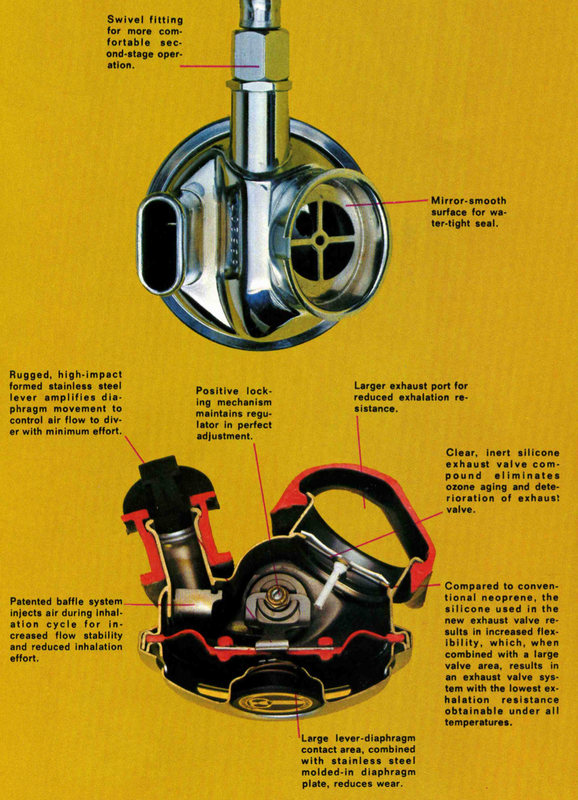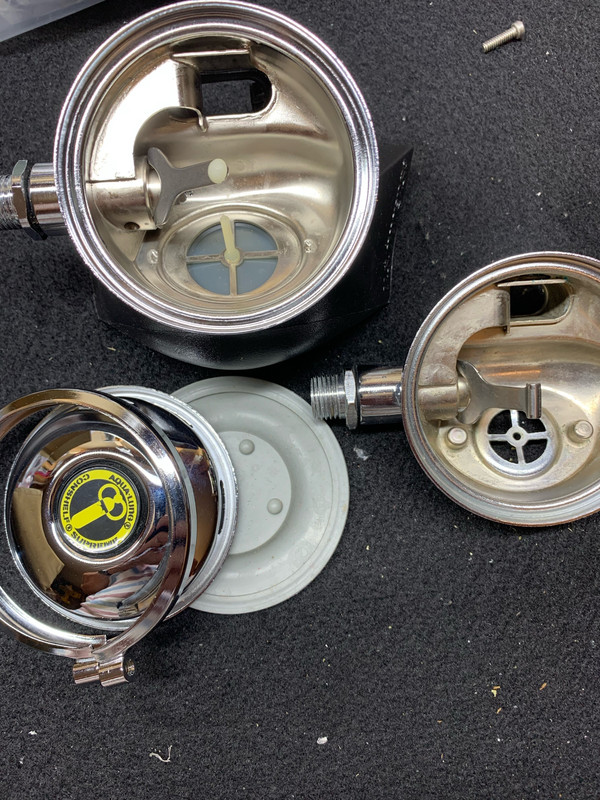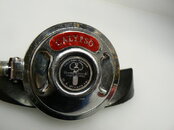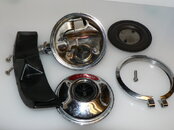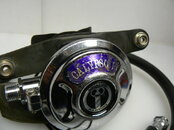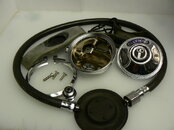The problems with the Calypso J reg of the OP is not reliability. Sure, reduce the tank pressure to 2400 psi to reduce possibility of extrusion. But, the tiny, little, bitty, tinsy, little bitty exhaust valve is like trying to exhale through a straw. The inhalation part is fine but one cannot inhale until they have exhaled. These old 1085 second stages with the tiny exhaust valve and the restrictive two screw tee are very high WOB and IMO dangerous to use. At 12 or 14 years of age I could get enough air in the 10 to 20 feet of water I was usually in, now, no way.
Finally I learn somebody who seems reporting personally of problems exhaling from a Vintage 2nd.
I read about it a couple of times, but never ever heard of somebody personally that he/she experienced real problems with the exhaling process.
Years ago I was asking if somebody here in the forum had personally experienced real problems with this issue, but nobody came up.
That a high cracking effort (CE) can be stressing and dangerous seems clear, so Scuba Engineers have been trying to reduce the CE for decades.
There seems to be a technical limit which more or less has been reached.
Since the 'exhaling effort' (EE) is part of the WOB values on the ANSTI Test Machines, it seems that manufacturer have began to concentrate their efforts to lower their WOB numbers by designing more efficient exhaust valves instead of concentrating on lowering the static and 'dynamic' CE.
That's completely okay with me, but I have never understood why the EE could be in practice as important as the CE.
I see that the loop would be difficult to put in numbers in a different way as is done, but if I look on an ANSTI loop of a certain 2nd, I just check the CE part and it's 'Venturi Behavior', the EE doesn't matter too much to me.
So if a 2nd has very good WOB numbers because of extreme low EE values, it doesn't makes it to me automatically an extraordinary good 2nd.
Sure it is an advantage if a 2nd has a low EE, but does that mean that using old US Divers or SP 2nds is 'dangerous'?
I mean, also those regs in the 60ties and 70ties had been designed by engineers with the means of their time.
Anyway, at least I know now a witness who seems to confirm that a higher EE is not only in theory problematic, but also in practice.
Maybe some more come up with their bad experiences with a high EE as it is produced with regs like the US Diver or SP or similar Vintage ones, because in my 40 year diving experience with more than 4000 dives, diving very different models I have never experienced practical problems while diving with the EE.




